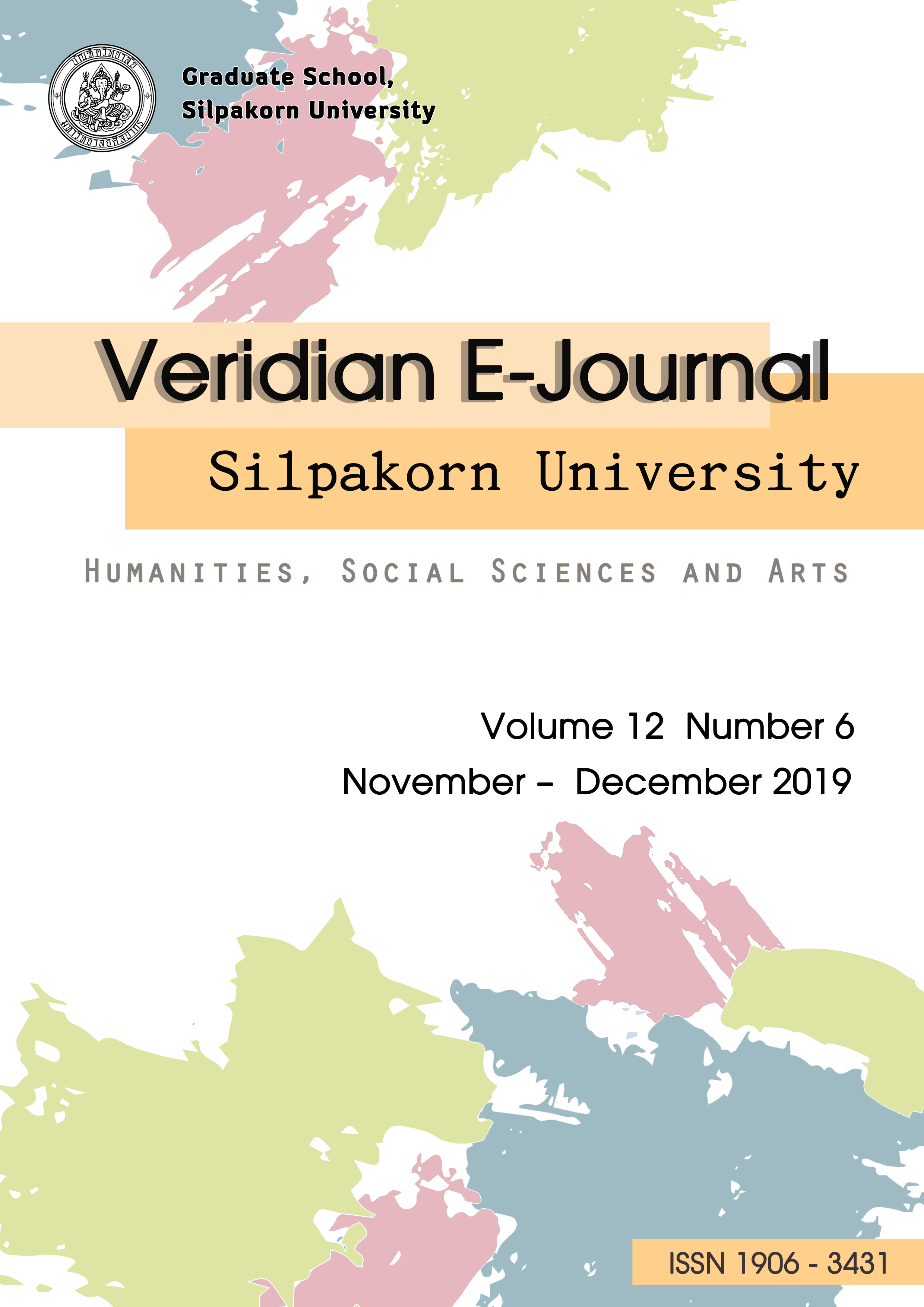การก่อรูปของพื้นที่สาธารณะในย่านชุมชนเก่า :กรณีศึกษาชุมชนพาดสาย ย่านเยาวราช (Formation of Public Space in Old town Community : Case study in Pad Sai Community, Yaowarat District)
Main Article Content
Abstract
เยาวราชเป็นศูนย์กลางทางเศรษฐกิจที่สำคัญของประเทศในอดีต ที่มีจุดเด่นคือการผสมผสานระหว่าง "ย่านธุรกิจการค้า ย่านที่พักอาศัย และวิถีชีวิตแบบชุมชนเมือง" ที่เชื่อมโยงร้อยรัดผูกพันกันด้วยวัฒนธรรมที่หลากหลายทว่ามีเอกลักษณ์เฉพาะตัว แต่การขยายตัวของเมืองกรุงเทพมหานครทำให้เยาวราช กำลังเผชิญปัญหาด้านสภาพความแออัด ส่งผลให้คนในชุมชนซึ่งนับได้ว่ามีสภาพทางเศรษฐกิจค่อนข้างดี กลับมีคุณภาพชีวิตเชิงกายภาพไม่ดีเท่าที่ควร เนื่องจากขาดแนวทางที่เหมาะสมในการพัฒนาพื้นที่สาธารณะซึ่งจำเป็นต้องทราบถึงปัจจัยที่ส่งผลต่อการก่อรูปและพฤติกรรมการใช้พื้นที่สาธารณะของคนในชุมชนตามทฤษฎีความสัมพันธ์ของ “ความเป็น-อยู่-คือ”ของพื้นที่ (perceived-conceived -lived)ที่กล่าวถึงการก่อกำเนิดพื้นที่ทางสังคม (Social space) ว่าเป็นพื้นที่ที่เกิดจากลักษณะวิถีการดำรงชีวิตที่แตกต่างกันในแต่ละชุมชน เราจึงควรศึกษาที่กระบวนการเกิดของพื้นที่สาธารณะมากกว่าตัวพื้นที่เอง (Lefebvre, 1991 : 53) งานวิจัยนี้จึงได้เลือกชุมชนพาดสายเป็นตัวแทนของชุมชนเยาวราช เพื่อศึกษาสภาพทางกายภาพและพฤติกรรมในการใช้งานของคนในชุมชน ซึ่งเป็นกลุ่มคนที่มีการประกอบอาชีพ อายุ เชื้อชาติ ศาสนา ที่ใกล้เคียงกันตามทฤษฎีของ Madanipour (1996 : 26) ซึ่งกล่าวว่า แม้จะเป็นการยากที่จะเชื่อมการศึกษาพื้นที่สาธารณะทางด้านกายภาพ จิตวิทยาและสังคมเข้าด้วยกัน แต่แท้จริงกลับมีความเกี่ยวพันกันอย่างลึกซึ้ง การศึกษาพื้นที่จึงควรศึกษาทั้งการรับรู้ (perceive) การสร้างสรรค์ (create) และการใช้ (Use) ของพื้นที่นั้น โดยนักวิจัยได้ทำการสำรวจเชิงกายภาพ (Physical Determination) และเชิงพฤติกรรม (Behavioral Determination) เพื่อนำมาประเมินผลเปรียบเทียบว่าปัจจัยใดที่ส่งผลต่อการก่อรูปของพื้นที่สาธารณะนั้นๆมากกว่ากัน ผลการวิจัยพบว่าปัจจัยทางด้านพฤติกรรมค่อนข้างส่งผลต่อการก่อรูปของพื้นที่สาธารณะในชุมชนพาดสายมากกว่าปัจจัยทางด้านกายภาพ ดังนั้นการเชื่อมโยงไปสู่แนวทางที่เหมาะสมในการพัฒนาพื้นที่สาธารณะในชุมชนเก่า จึงควรคำนึงถึงพฤติกรรมของคนในชุมชนเป็นหลัก เนื่องจากปัจจัยทางด้านกายภาพที่มาจากการออกแบบในเชิงวิชาการอาจไม่สอดคล้องกับความต้องการและพฤติกรรมของคนในพื้นที่
Yaowarat is the country’s remarkable economic center in the past that connected various but unique cultures of “business and residential areas as well as urban lifestyles” and integrated into one. However, the urban expansion of Bangkok has caused Yaowarat to currently face a serious problem of congestion resulting in poor quality of life of the people in this fair economic community. This is due to lack of an appropriate way to develop public space, which, according to the theory of relationship of “perceived-conceived-lived” spaces, needs to know the factors that affect the formation and the behavior of public space utilization of the community people. According to the theory, the social space formation is derived from different lifestyles of the people in each community. Therefore, we should study the process of public space formation rather than the public space itself. (Lefebvre, 1991 : 53). This research then selected Pad Sai Community as the representative of Yaowarat Community to study physical and behavioral conditions in using public space of the people; due to their similarity in terms of occupations, ages, nationalities and religions. As per Madanipour’s theory (1996 : 26), although it is quite difficult to integrate physical, psychological and social studies of a public space; they are truly connected in a profound way. Hence, the study has to cover the perception, the creation and the utilization of such space. The researcher then surveyed, compared and evaluated the Physical Determination and Behavioral Determination of the public space in order to find out which factors had more impact on its formation. It was found out that behavioral determination factors seemed to affect the formation of public space in Pad Sai Community more than physical determination factors. As a result, to relate this finding into an appropriate way of developing public space in an old community; we have to concern more on behavior of the community people since physical determination factor derived from an academic design may not be in line with the need and behavior of the local people.
